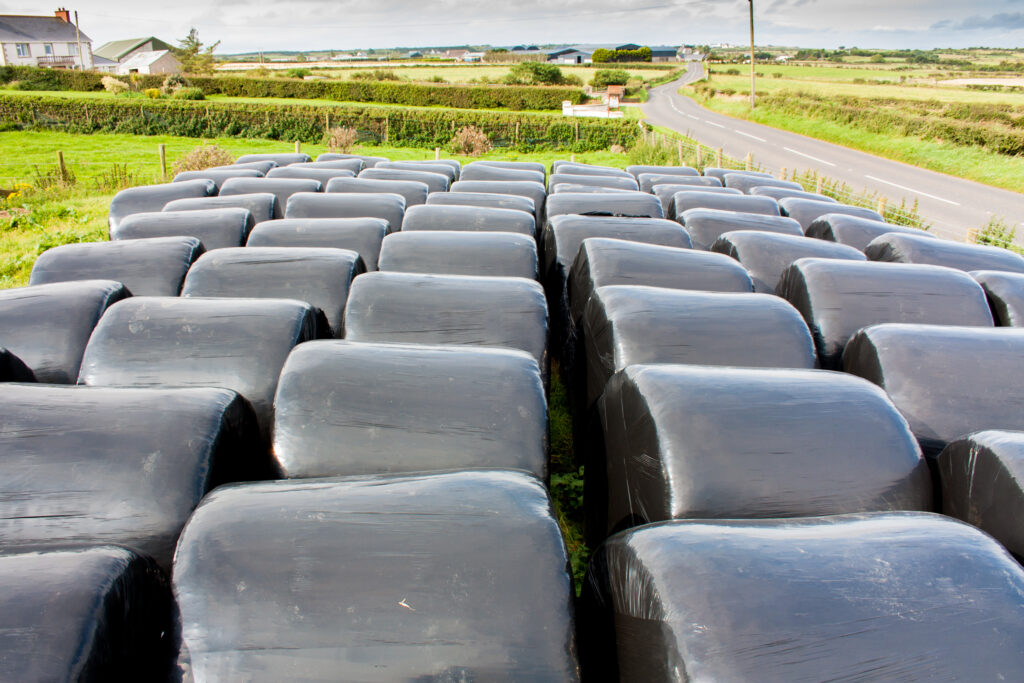Silage bales have a role to play on almost every Irish livestock farm, with silage contributing between 25% and 40% of dairy and beef animals diets.
Making bales on the milking platform at this time of year is almost inevitable, but it also has a vital role to play.
While on many farms silage bales are the main way of storing fodder for the winter months.
Making bales allows for the resetting of paddocks, were quality has drops, covers have become to high or there is a large amount of dung pads.
But they also vitally increase the amount of winter feed that is available on the farm in the coming winter months.
Although it may seem quite simple it is important that you ensure that the bales you make are made and stores in such a way that they remain top quality feed for the winter.
Preservation
Wilt to improve preservation and reduce effluent production. This also has the added benefit of reducing the number of bales/acre, thus reducing costs in the long run.
If the grass crop is heavy or drying conditions are limited, use the spreading/tedding option.
Spreading maximises the quantity of grass exposed to the sun and air, while the extent of ground cover following sward treatment has the biggest effect on drying rate.
Aim to produce dense, well-shaped bales. Try to ensure that the sward is at full width when entering the mouth of the baler.
Well-shaped silage bales are easier to wrap properly and handle without causing damage.
Silage bales
If you are not making them yourself, a lot of this is up to the contractor, but it is your job to ensure that your bales are being made to a high standard.
Ideally, the rows should be the full width of the mouth of the baler and the bales should be covered with no less than four uniform layers of plastic cover.
Dense and firm bales are much more easily handled and managed – without causing any damage.

Aim to wrap bales within two to three hours after baling, and ensure adequate plastic film is used.
The colour of the plastic should have no effect on baled silage quality however, black seems to be preferred option on most Irish farms today.
Transport
Ideally, transport your bales to the storage area and wrap them there. Unfortunately, this is often not practical on many farms.
Move field-wrapped bales to a storage area immediately. This will reduce the risk of bird damage in the field and will also allow for more efficient and simpler handling of the bale.
Many farmers draw/paint their bales in a bid to repel the threat of bird damage, but quick removal is the best option.
Storage
The storage rules around silage bales have changed, under the Good Agricultural Practice for Protection of Waters Regulations, known as ‘GAP regulations’.
They came into force on March 2022 and gave legal effect to the Nitrates Directive and Ireland’s Nitrates Action Programme (NAP).
The GAP Regulations provide a set of measures to ensure the protection of waters, including drinking water sources, against pollution caused by nitrogen and phosphorus from agricultural sources.

Part of this focuses on the storage of silage bales and other bales on farms.
Silage bales, including high dry matter silage or haylage, can only be stored a maximum of two bales high, in the absence of adequate facilities for the collection and storage of any effluent that may arise.
Bales must continue to be stored at least 20m from surface water or a drinking water abstraction point, as required under the previous GAP regulations.
